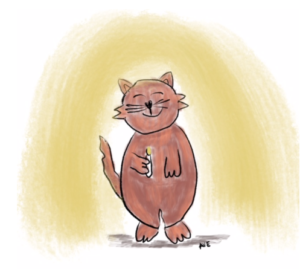
Researchers suggest that 95% of our behaviors are habitual patterns. We have each been conditioned by our upbringing, environment, and those we hang out with. The good news is that we have learned that we can build new neural pathways and develop new habits that serve who we are and want to be.
If we think the same thoughts and have the same emotional reactions and the same behaviors over time, it is like a road is formed in our brains. The roads are natural for us to travel and simply become the way we do things–often without thought or awareness. We all know how overtime driving becomes automatic. Of course, such pathways serve us. I know to brush my teeth when I awake and when I go to bed. I don’t have to waste valuable mental energy on remembering to do so.
Not long ago, we thought that once our baseline patterns were established, they could not be changed. Now, we know that “old dogs can learn new tricks.” We even believe that we can develop traits with repetition and awareness. While our amygdala is looking for pattern matches and oscillates the way a thermostat shifts to stay within a designated range, we can shift our baselines. This is very good news!
One area I have been working to shift is connecting more easily with a sense of joy and aliveness–what my colleague Gila Seriticioglu and I call JOYBeing. Quite frankly, I have tended to focus on making a difference and did not think I had time for joy. I didn’t think that it was something I should seek or was in the cards for me. There are so many challenges around us. However, I believe emotions are contagious and that if we can bring a little more joy and light to the world, many in our sphere of influence will benefit. My openness to joy has made quite a difference in how I live.
I have set my intention on noticing, appreciating, and expanding moments of joy. I consciously check in and pay attention to joyful moments and savor them. I can’t just think I want more joy in my life. I have tried that. Instead, I savor the sensations and fully embody the experience of joy. For example, I enjoy being with a friend, laughing at a joke with a neighbor, playing a game with family members, seeing a sunny day, walking in nature, learning something, etc. As I am aware of such moments, I choose to fully experience them and notice what it feels like to appreciate the joy of being alive. I have developed the practice of engaging in activities and interactions that inspire joy. For example, I create time to connect with friends and engage with art, beauty, and nature.
What habits are you working on developing this year?
Wishing you JOYBeing this New Year. May we each embody and share more joy and light.
